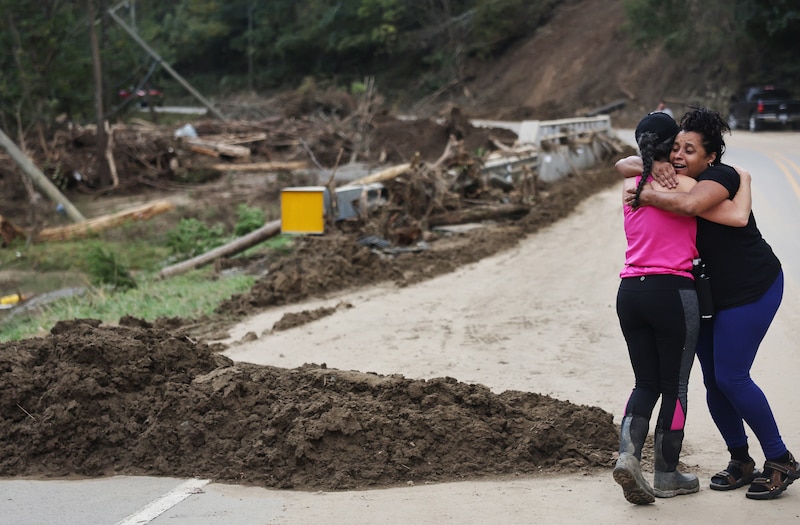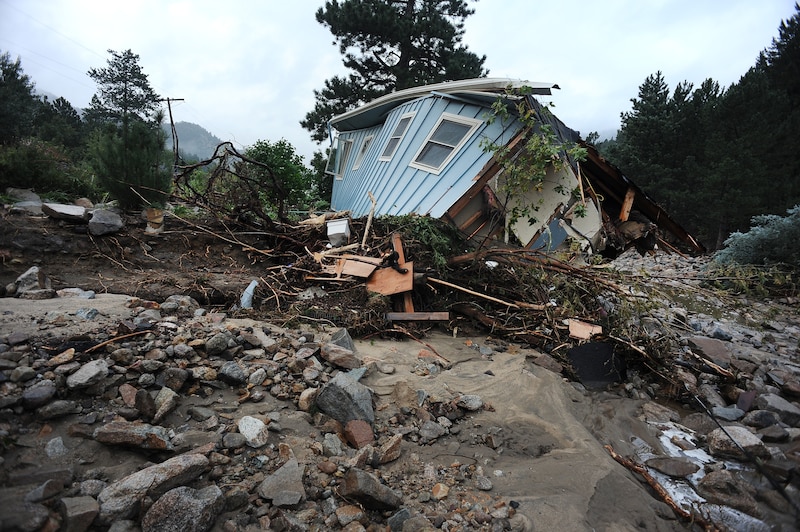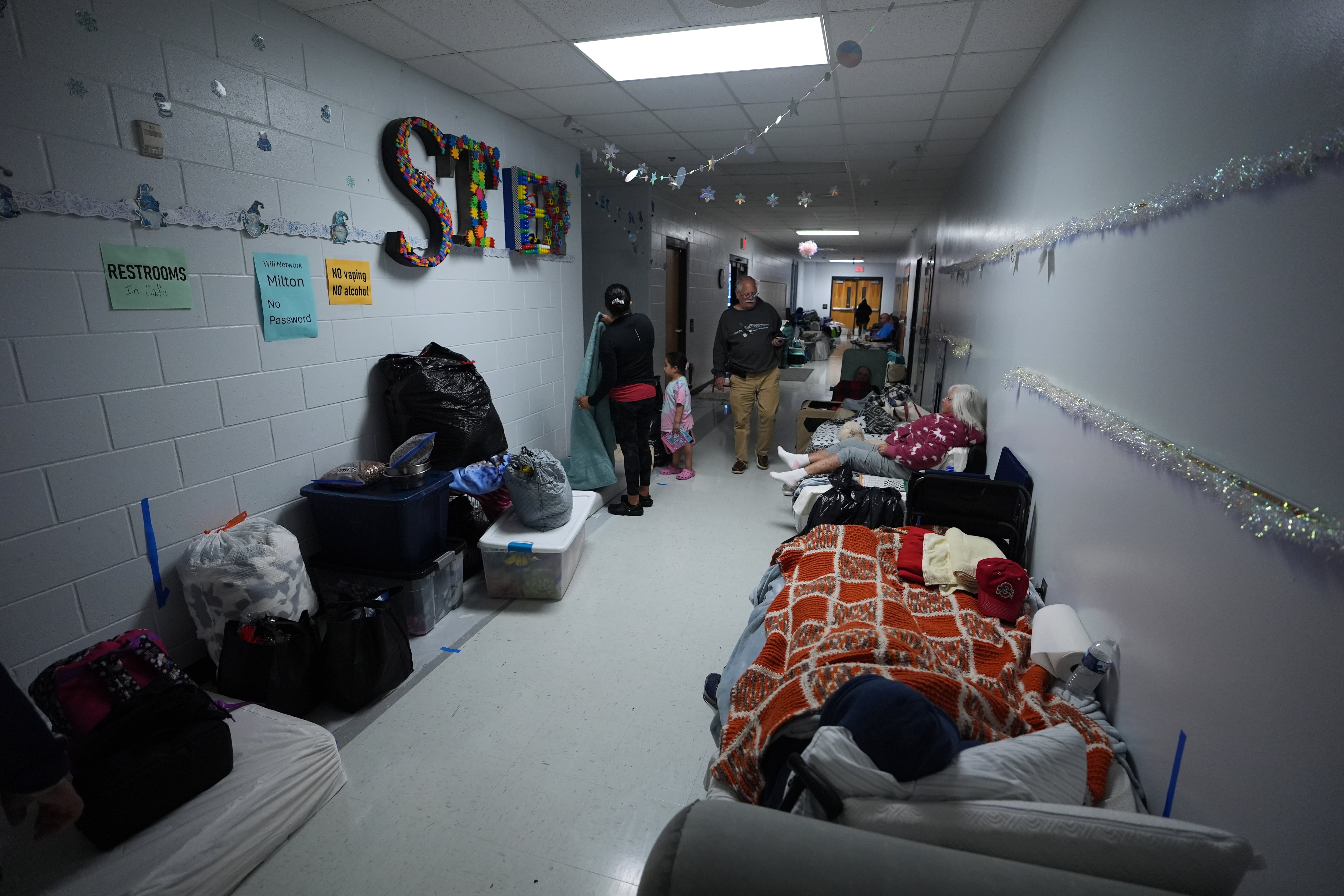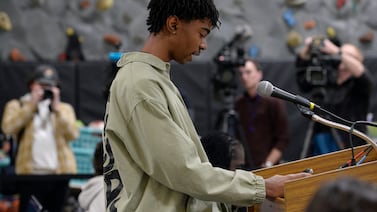Sign up for Chalkbeat’s free weekly newsletter to keep up with how education is changing across the U.S.
When devastating floods ripped through Jamestown, Colorado, in 2013, the rural mountain town’s school was physically unscathed. But students lost their homes. The town’s “patriarch” was killed. And the school building was converted to aid in disaster recovery.
It was only on the last day of the school year that kids were able to return to the school and celebrate graduation.
“It was a huge impact to be out of your home. I think just trying to care for the students, understanding that the biggest thing we could do for them was to support them emotionally and the families,” said Scott Boesel, the principal at the time. “Education was almost secondary for the first few months after the flood.”
As similar isolated but tight-knight rural communities in the southeast recover from Hurricanes Helene and Milton, educators and families are working together to address the physical and emotional consequences of the natural disasters. From flooding in Kentucky to fires in California to hurricanes in Puerto Rico, disasters everywhere have tested schools in recent years. Some facets of these crises are urgent but relatively short-term concerns. Others persist for years. But they are interconnected.
Helene and Milton have reportedly caused hundreds of deaths and devastating damage to property and livelihoods that’s still being tallied — one estimate has put the cost of recovering from Helene at $34 billion. Many schools and districts are still struggling with returning to class. Around 30 North Carolina school districts were impacted by the storms, according to the North Carolina Association of School Boards.
Most of the schools affected in North Carolina have “opened back up” but others have indicated that they are closed indefinitely, said Leanne Winner, the association’s executive director, late last week.

Specialists and educators interviewed by Chalkbeat about school communities that have been affected by such disasters highlighted the importance of prioritizing students’ mental health. Losing a house or a friend, or even less-catastrophic disruptions stemming from a natural disaster, are traumatic experiences for students.
Studies show that, during the first three months after a disaster, symptoms of post-traumatic stress can be seen in up to 72% of students in affected areas, according to research by Betty Lai, a professor of counseling psychology at Boston College.
That’s why it’s essential to monitor students and identify those under the most stress so that they can receive appropriate care.
“We have seen through research that many kids are resilient, meaning they seem to bounce back after a disaster,” Lai said. “But the bad news is that some children will experience high levels of distress, which we should be concerned about because we know that those distress symptoms can go on for many years.”
That issue is directly connected to academic recovery. A 2022 study published by the federal Government Accountability Office about the impact of natural disasters on schools found that “academic recovery generally could not take place until students and staff had begun their emotional recovery.”
The GAO’s study also found that the forced move to “improvised facilities” due to physical damage to normal school infrastructure also “disrupted the learning process.”
But trying to minimize effects on learning and test scores isn’t the only reason to focus on getting school buildings up and running again. In Jamestown, the district made an effort to resume classes as soon as possible, even if the school building could not be used. That’s because reestablishing kids’ routines is an essential aspect of making them feel safe.
“The key for the kids is trying to keep something similar in their lives,” Boesel said. “Having the ability to keep kids together, even though they were in a different location than they were used to, I think was huge for the kids in their recovery and huge for the families, so they could stay together as a unit.”
Losing a classroom can resemble losing a home
Schools in western North Carolina don’t have to look too far to find other schools that have grappled with expected and unexpected consequences from storms.
When Hurricane Florence hit the eastern portion of North Carolina in 2018, it severely damaged White Oak High School in Onslow County, forcing it to close entirely for more than five weeks.
During the 39 days while the school was entirely closed, students and teachers met in alternative locations — such libraries, churches, and other common areas — to keep kids engaged.
Even after the school partially reopened, students and teachers had to adapt to the loss of the science building, which remained under construction for almost a year, according to Christopher Barnes, the school’s principal at the time.
He recalled one teacher, for example, who had worked at the school for 30 years and lost all of her teaching materials.
“Teachers who lost their rooms in the school experienced the kind of trauma that I would expect when someone lost their home. And I did not anticipate that at the time,” said Barnes, who is now the Onslow County district’s chief academic officer. “Once I realized that was important to them and that it was more of an emotional toll, I understood that I could not be dismissive but had to sit and talk through those things with them.”
The recovery efforts did bring the White Oak community closer together and helped people support each other more. It also drove students' and teachers' focus to the academic curriculum. But in general, the challenges imposed by the loss of physical space also affect students’ learning: Students get less instruction time and attendance rates of both students and teachers can decline.
The federal accountability office’s report from 2022 quoted county education officials who stressed that students from already vulnerable populations, such as English language learners and students with disabilities, were hurt the most by instruction time lost to disasters.
It also noted that in districts with large shares of students from low-income backgrounds, there were adverse academic effects, whereas wealthier districts didn’t see “extended declines” in academic performance.
Data about the academic impacts of Hurricane Florence and Hurricane Matthew on North Carolina schools produced mixed results: Elementary schools’ test scores declined in the three years after the storms, but that pattern didn’t carry over into middle and high schools, according to researchers at the University of North Carolina at Chapel Hill.
Recovery also depends significantly on the state and federal financial resources provided to schools. The GAO study showed that, in many cases, schools' insurance policies and federal grants were insufficient.
Counselor differentiates mental health support after disasters
The 2013 flood in Colorado also impacted Centaurus High School in Lafayette, where Sarina Gonzales worked as a counselor.
Gonzales works on the Boulder Valley School District’s Trauma Response Team, and provided emotional support for students after that flood as well as the Marshall Fire in 2021, which destroyed over 1,000 homes in Boulder County. When events like these happen, the team mobilizes quickly.
“I go in assuming that students, for a multitude of different reasons, don’t feel safe. And so I try to restore a sense of safety to the students,” she said.

In the aftermath of the Marshall Fire, the number of students identified as homeless in Boulder Valley district rose dramatically. In that case, Gonzales was also responsible for working with students from other schools in the county.
After that immediate response, it is essential to monitor students and identify those under the most stress so that they can receive appropriate care. According to Betty Lai’s research, the number of students exhibiting post-traumatic stress symptoms stemming from natural disasters tends to decrease over time, but around 10% of kids will still present them more than two years after an extreme event.
“Children who watched the water level rise or had to evacuate quickly, couldn’t return to their homes, or had a caregiver lose their job, for example, are more likely to experience distress after a disaster,” Lai said.
The shared catastrophe of natural disasters might erase some normal distinctions between members of school communities. But Gonzales said she had to adapt the assistance provided according to students’ different ages and needs.
“In my experience, elementary and middle school students wanted to talk individually and just tell their story to an adult,” she recalled. “They wanted to talk about getting their pets out, their story of how they got out of their house and rushed away from the fire, and things like that.”
Meanwhile, she said, high school students “didn’t want to talk to a stranger. They preferred to process that with people they knew better. But the high schoolers needed a space to go to, even if they didn’t want to talk.”
Wellington Soares is Chalkbeat’s national education reporting intern based in New York City. Contact Wellington at wsoares@chalkbeat.org





